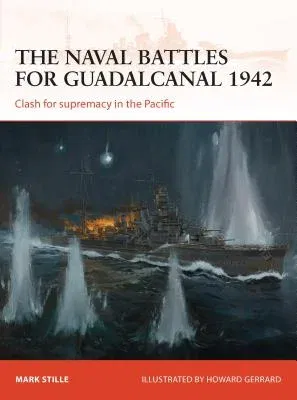The battle for Guadalcanal that lasted from August 1942 to February 1943
was the first major American counteroffensive against the Japanese in
the Pacific, it also marks the high point of Japanese expansion and can
justly be claimed as one of the major turning points of the Pacific War.
While the troops of the US Marine Corps and later the US Army battled
the Japanese occupiers on the densely jungled island of Guadalcanal, the
US and Japanese naval forces fought a series of tightly contested
battles in the waters nearby. The first of these, the battle of Savo
Island on the night of 9 August 1942, saw the Japanese inflict a sever
defeat on the Allied force, driving them away from Guadalcanal and
leaving the just-landed marines in a perilously exposed position. This
was the start of a series of night battles that culminated in the First
and Second battles of Guadalcanal, fought on the nights of 13 and 15
November, that were narrowly won by US Naval forces and prevented the
Japanese from reinforcing their troops on the island to any great
extent, and heralded the turning of the tide in the battle for
Guadalcanal. One further major naval action followed, the battle of
Tassafaronga on 30 November 1942, when the US Navy once again suffered a
severe defeat, but this time it was too late to alter the course of the
battle as the Japanese evacuated Guadalcanal in early February 1943.This
title will detail the contrasting fortunes experienced by both sides
over the intense course of naval battles around the island throughout
the second half of 1942 that did so much to turn the tide in the
Pacific.

